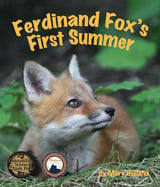Alignment to Standards for WA

| Grade | Number | Standard |
|---|---|---|
| 2,3 | 2-3 ES2C | Weather changes from day to day and over the seasons. Weather can be described by measurable quantities, such as temperature and precipitation. |
| 2,3 | 2-3 LS1B | Animals have life cycles that include being born; developing into juveniles, adolescents, then adults; reproducing (which begins a new cycle); and eventually dying. The details of the life cycle are different for different animals. |
| 4,5 | 4-5 LS1B | Plants and animals have different structures and behaviors that serve different functions. |
| 4,5 | 4-5 LS1D | Plants and animals have structures and behaviors that respond to internal needs. |
| 4,5 | 4-5 LS3B | Plants and animals inherit many characteristics from their parents. Some inherited characteristics allow organisms to better survive and reproduce in a given ecosystem. |
| 4,5 | 4-5 LS3C | Some characteristics and behaviors result from an individual plantês or animalês interactions with the environment and are not passed from one generation to the next by heredity. |
| K,1 | K-1 LS1B | All plants and animals have various external parts. |
| K,1 | K-1 LS1D | Different animals use their body parts in different ways to see, hear, grasp objects, and move from place to place. |
| K,1 | K-1 LS1E | Animals have various ways of obtaining food and water. Nearly all animals drink water or eat foods that contain water. |
| K,1 | K-1 LS2A | There are different kinds of natural areas, or habitats, where many different plants and animals live together. |
| K,1 | K-1 LS3B | There are many different types of living things on Earth. Many of them are classified as plants or animals. |
| K,1 | K-1 LS3C.3 | how pairs (males/females) of plants and/or animals are similar to and different from each other (e.g., cats and dogs both have four legs, but many dogs have longer snouts than cats). |